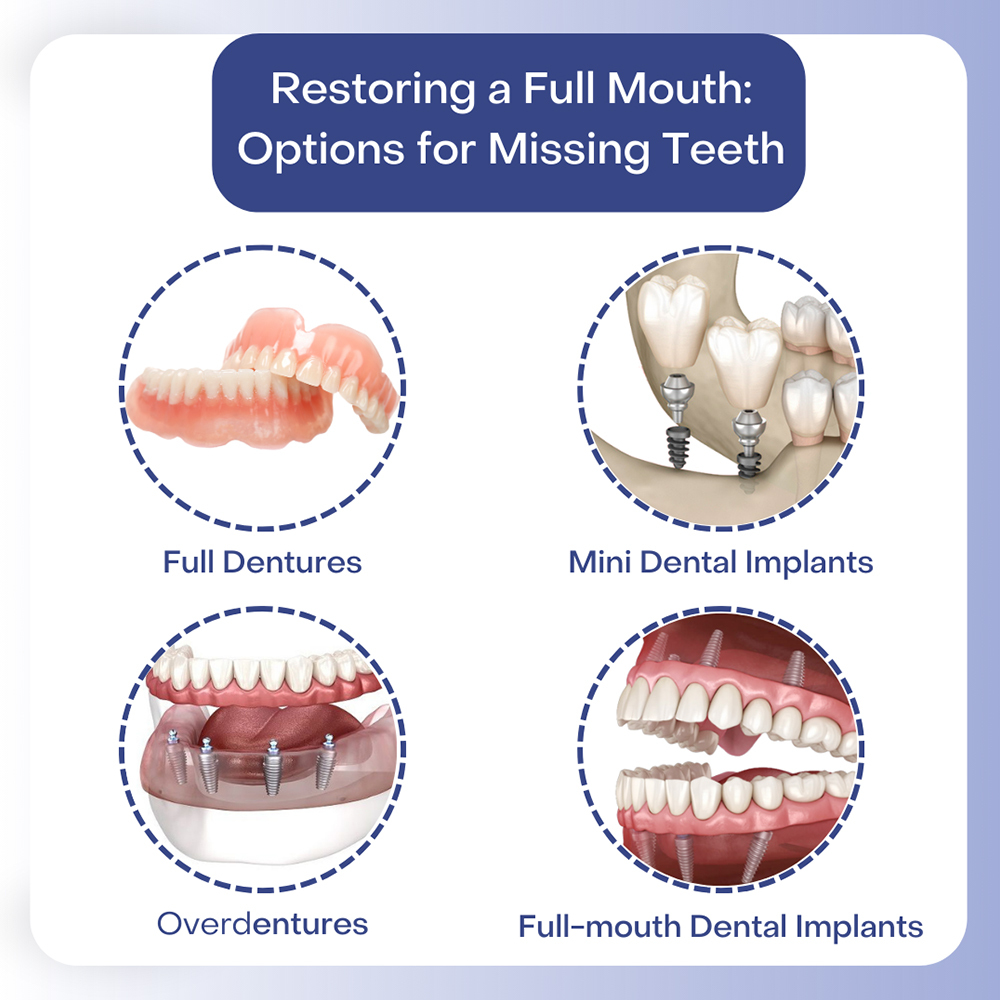Some Known Details About Dental Sense
Some Known Details About Dental Sense
Blog Article
The Only Guide for Dental Sense
Table of ContentsThe Best Guide To Dental Sense8 Simple Techniques For Dental SenseThe Buzz on Dental SenseSome Known Details About Dental Sense
are clinical devices operatively implanted into the jaw to restore a person's capacity to eat or their look. They provide assistance for artificial (phony) teeth, such as crowns, bridges, or dentures. When a tooth is lost as a result of injury or illness, a person can experience complications such as rapid bone loss, defective speech, or modifications to chewing patterns that lead to pain.Oral dental implant systems include a dental implant body and oral implant joint and might additionally include an abutment fixation screw. Same day dental implants. The oral implant body is operatively put in the jawbone instead of the tooth's origin. The dental implant abutment is usually connected to the dental implant body by the joint addiction screw and prolongs with periodontals into the mouth to support the attached man-made teeth
(https://www.blogtalkradio.com/dentalsense1)Structure of The Dental Implant System selecting dental implants, talk to your oral supplier regarding the potential benefits and threats, and whether you are a candidate for the procedure. Things to take into consideration: Your overall health is an important element in figuring out whether you are a good candidate for dental implants, for how long it will certainly require to heal, and how much time the implant might stay in place.
Cigarette smoking might affect the recovery process and lower the long-term success of the dental implant. The recovery procedure for the dental implant body may take a number of months or longer, throughout which time you usually have a momentary abutment in place of the tooth. the oral implant treatment: Thoroughly follow the oral health guidelines provided to you by your oral company.
The Definitive Guide for Dental Sense
Implant failing can lead to the demand for another procedure to deal with or replace the dental implant system. Recovers the capability to chew Restores cosmetic appearance Helps maintain the jawbone from diminishing due to bone loss Protects the health of the bordering bone and periodontals Assists maintain surrounding (neighboring) teeth steady Enhances top quality of life Damage to surrounding all-natural teeth during dental implant placement Injury to the surrounding cells during surgical procedure, such as sinus opening Injury throughout surgical procedure (for example, fracture of surrounding jawbone) Poor function, such as seeming like the teeth do not bite with each other normally A feeling that the tooth is loose or twisting in location resulting from an abutment screw loosening Implant body failing (looseness of the dental implant body) as a result of systemic infection, which may be extra likely in patients with unrestrained diabetes mellitus due to regional infection in bone and gum tissues sustaining the implant body because of delayed recovery, which might be a lot more most see post likely in people that smoke Trouble cleansing the gum tissues around the implant, resulting in inadequate oral health Without treatment gum condition Post-surgical feeling numb as a result of nerve impingement or damage Always notify healthcare providers and imaging service technicians that you have dental implants prior to any kind of magnetic vibration imaging (MRI) or x-ray treatments.
FDA is not familiar with any unfavorable events reported for MRI or x-ray procedures with dental implants. Oral implants systems are typically constructed from materials that adhere to global agreement requirements of the International Organization for Standardization (ISO) or ASTM International. These requirements have details of what makes a safe product.

A dental implant is a framework that changes a missing out on tooth. With screw-like devices, the cosmetic surgeon inserts an implant right into the jawbone, and it acts as an anchor for a fabricated tooth, called a crown.
Facts About Dental Sense Revealed
Some people are not qualified for dental implant surgical procedure. It is for dental cosmetic surgeons to operate people with: intense illnessuncontrollable metabolic diseasebone or soft cells disease or infectionIf these problems are settled, a person can have the surgery. In, dental specialists avoid operating on individuals with: If individuals with any one of the above go through oral implant surgical treatment, there is a greater threat of the dental implant failing.

Oral implant surgical treatment is a personalized procedure. It's not the very same for everybody. But the following offers a basic introduction of what you can anticipate your dental practitioner, oral doctor, periodontist or prosthodontist to do: Put the implant operatively. Give you time to recover. Connect the article and last crown, bridge or denture.
Next off, your doctor will carefully position the oral implant right into your jaw. Your specialist will certainly reposition your gum tissues and close the incision with stitches. If your dental implant is near the front of your mouth, your dental expert will certainly make a short-term tooth for you to wear until you heal. By doing this, you won't have a space in your smile while you recuperate.
Little Known Facts About Dental Sense.
Throughout the healing phase, your jawbone should fuse to the oral implant. This procedure can take anywhere from three to nine months.
Once your implant heals, your dental professional can connect the abutment (tiny port article) and your final reconstruction (crown, bridge or denture). This typically takes about one hour to finish and may call for a second minor surgical treatment. You should not really feel any type of discomfort throughout your dental implant treatment since your supplier will make use of drug to numb your periodontals.
Report this page